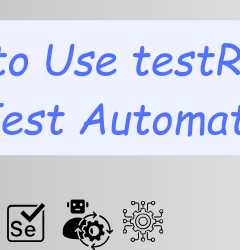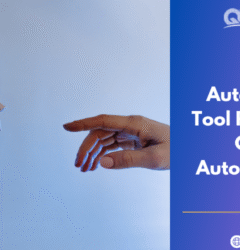Automation Testing
Unlocking the Power of Automation: Revolutionizing QA Software Testing
- By Nikhil Trivedi
- No Comments
22 Jun

Automation has revolutionized various industries, bringing about significant changes in the way work is performed and businesses operate. This revolution has had a profound impact on numerous aspects, from manufacturing and logistics to customer service and information technology and the QA software testing industry is no exception. Tech startups are increasingly adopting automation to enhance their Software testing processes, enhance efficiency, and deliver top-quality software products.
By Automating Software Testing, companies can unlock numerous benefits. It has enabled companies to streamline processes, enhance customer experiences, reduce costs, and stay competitive in the ever-growing business landscape. Let us deep dive into the Market scenario, challenges in QA testing, and the power of Automation to ease QA Software Testing.
Market Scenario
The one that outperforms various technological advancements, including ChatGPT, is Artificial Intelligence. Finance, Health, Governance, social, environment, education, and tourism- its presence and utilization are massive and impactful.
According to the Mckinsey report, AI acceptance is 2.5X more today since 2017, and there is increased confidence in AI as businesses plan year-on-year increases in their AI investments. Companies that are experiencing the highest financial returns from artificial intelligence (AI) solutions are consistently outperforming their competitors. This suite of forward-thinking organizations is leveraging AI to gain a competitive edge and drive significant business growth.

QA and Software Testing: Key Challenges
Some key challenges in QA and software testing include:
- Dealing with long regression testing cycles– Regression Testing is performed to ensure that existing functionality continues to work as expected when new changes or enhancements are introduced. However, as the development team adds new changes, the existing code that has already gone through testing may be impacted, requiring new tests to be conducted and added to the regression suite. This can result in lengthy regression testing cycles.
- Ensuring adequate test coverage – Another challenge in QA software testing is ensuring adequate test coverage. Test coverage refers to the extent to which the software application or system has been tested to validate its functionality, performance, and reliability. As the complexity of an application increases, ensuring full test coverage becomes increasingly challenging.
- Bug escape and unresolved defects– The issue of defect leakage and ignored bugs is also a key challenge in software testing. This problem is diverse and can have severe consequences. If proper attention is not given to defect management and tracking, there is a risk of encountering a significant number of ignored bugs.
- Managing automated scripts – Another challenge in software testing is maintaining automated scripts. As applications undergo regular updates and changes, automated test scripts can break due to various reasons, such as changes in the user interface (UI) that cause objects to become unidentifiable.
How can Automation help solve these QA challenges?
- Execution of repetitive test cases– Firstly, automation allows for the execution of repetitive test cases, reducing the time and effort required compared to manual testing. It also enables faster test execution, enabling faster feedback loops, and shorter release cycles. With automation, tests can be run overnight or in parallel, accelerating the overall testing process.
- Increased test coverage– Another advantage of automation is increased test coverage. Automated tests can cover a wide range of scenarios, including edge cases and complex scenarios, which may be challenging or time-consuming to test manually. This comprehensive test coverage helps identify more defects and ensures the software’s robustness.
- Accuracy of testing– Automation also enhances the accuracy and reliability of testing. Automated tests follow predefined scripts and eliminate human errors and inconsistencies that may occur in manual testing. This leads to more reliable results and reduces the risk of overlooking critical defects.
- Facilitates regression testing- Furthermore, automation facilitates regression testing. As software evolves and new features are added, regression testing ensures that existing functionality remains intact. Automated regression testing significantly reduces the effort and time required to retest the entire application, allowing QA teams to focus on new functionality and critical areas.
There are various options available, such as Selenium, Appium, and JUnit, each catering to specific testing needs. It is essential to choose the right tools and frameworks based on the application’s technology stack, testing requirements, and team expertise.
In a Nutshell,
Automation has revolutionized QA Software Testing by improving efficiency, test coverage, accuracy, and reliability. QACraft stays updated with the latest industry trends, tools, and best practices in QA testing. Outsourcing QA testing to QACraft allows your internal team to focus on their core competencies and strategic activities. It ensures that your applications are thoroughly tested, performs optimally, and provide a seamless user experience, ultimately contributing to the success of your projects.
Nikhil works as a QA EngineerQACraft. Holding Diploma in Electronics engineering. He has 1+ years of experience in manual testing. Currently, he is upgrading his skills in automation testing. In his free time, he loves to travel and expanding technical skills.
Related Post
Leave a Comment Cancel reply
Categories
- Agile Testing
- Alpha Testing
- Android App Testing
- API Testing
- Automation Testing
- Banking Domain Testing
- Beta Testing
- cloud testing
- Corporate Life
- cross browser testing
- Cypress Testing
- desktop testing
- Difference
- Domain Testing
- E-commerce Website Testing
- E-learning App Testing
- End-To-End Testing
- Functional Testing
- Game Testing
- Healthcare Domain Testing
- Integration Testing
- Interview Questions
- ios App Testing
- Jenkins
- JIRA
- Katalon
- Manual Testing
- Mobile App Testing
- Monkey Testing
- Non-Functional testing
- Performance Testing
- Postman
- Regression Testing
- Salesforce Testing
- Sanity Testing
- security testing
- Selenium Testing
- Smoke Testing
- Software Testing
- Stability testing
- Static Testing
- Test Case
- Test Environments
- Test Scenario
- Test Script
- TestRigor
- Web Application Testing
© Copyright 2025 QACraft Pvt. Ltd. All rights reserved.
Contact : +91 9157786796




Nikhil Trivedi